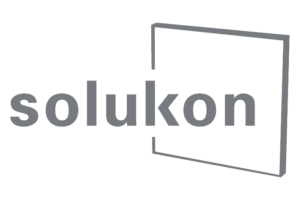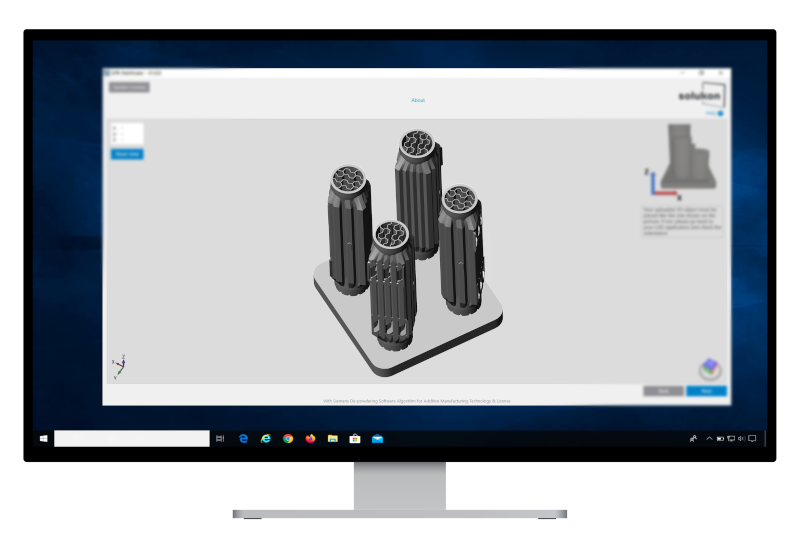SPR-Pathfinder® Q&A
Recently, Solukon has launched the first depowdering software, the SPR-Pathfinder®. Learn in the Q&A of TCT magazine what makes this software an efficiency booster in postprocessing.
What motivated Solukon to launch the SPR-Pathfinder®?
It’s always been Solukon’s ambition to automate and simplify powder removal. In 2018, Solukon CEO Andreas Hartmann discussed the potential for an algorithm-based depowdering mode with Dr. Christoph Kiener, Principal Key Expert on Functional Design for Manufacturing at Siemens Technology. We were sure that metal parts might get too complex to let humans do the programming of the depowdering motion pattern. Developed by Siemens Technology in a joint project with Solukon, the software was unveiled publicly for the first time in 2018 under the name SiDAM.
After a successful testing phase SiDAM turned out to be the game-changer for automated depowdering that we intended it to be. So, Solukon has acquired exclusive rights to the software, developed it into a Solukon product, and brought it to the AM market under the new name, SPR-Pathfinder®.
What are the fundamental capabilities of the product?
SPR-Pathfinder® software uses the build job’s CAD file to calculate the ideal motion in the Solukon system. The software calculations are based on a flow simulation that analyzes the part’s digital twin. The individually calculated motion sequence is then read by the Solukon system, which in turn runs the programmed paths.
SPR-Pathfinder® can currently run on SFM-AT800-S and SFM-AT1000-S models.
What are the benefits of using SPR-Pathfinder® in real-terms?
- The SPR-Pathfinder® is a fire-and-forget software. So you basically load the CAD file in binary format into the software and it does the rest. So, there is no human programming or teaching of depowdering motion sequences required anymore.
- Significant time savings – No time is needed for programming anymore and users have more time for more valuable working steps in the process.
- With the software you get an optimized degree of part cleanliness especially for components with intricate internal channels.
- The SPR-Pathfinder® paves the way to a true serial cleaning and therefore to serial production. Obviously, SPR-Pathfinder® executes the same cleaning program for the same kind of parts.
- SPR-Pathfinder® is able to calculate the motion sequence for the whole build job, i.e. even for different parts on one build plate simultaneously. This means another booster in efficiency for AM productions with a greater variance of components.
- As soon as the CAD file of the component is ready, SPRPathfinder® can calculate the depowdering motion patters. So, the depowdering can be arranged even when the printing of the part is still in progress. The software also ensures part cleanliness, so designers can freely design their components and do not need to consider any obstacles in depowdering.
Why is creating a digital twin for the postprocessing of parts important?
Creating and working with a digital twin in postprocessing makes the process steps after printing predictable and scalable even if the parts are still in production. Before SPR-Pathfinder ® was launched the digital twin was just usable in the printing process but not in any subsequent process steps. For a total digital manufacturing process, the postprocessing needs to be digital to a certain degree. The digital twin is one tool for that, alongside sensors and digital interfaces.
And how does the software integrate with the rest of the additive manufacturing workflow?
The software itself works not in the Solukon system but on a PC or laptop via any recent windows operating system, giving maximum flexibility. Via OPC UA you can load and start the cleaning program, calculated by SPR-Pathfinder® in the Solukon system. Just like the Solukon systems themselves, the SPR-Pathfinder® is compatible with every 3D printing system and peripheral equipment on the market.



Leave a Reply
Want to join the discussion?Feel free to contribute!